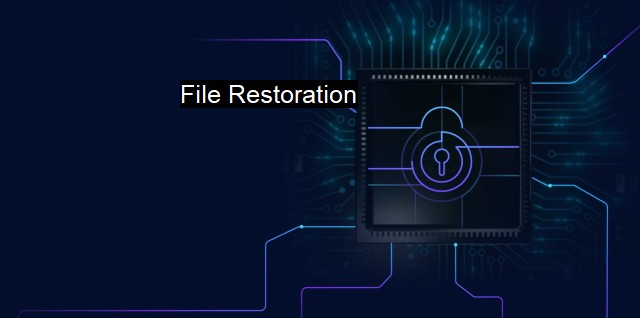What is File Restoration?
Exploring File Restoration: Importance, Methods, and Tools for Cybersecurity and Antivirus
File restoration is the process of recovering files that have been lost or inadvertently deleted. These files may have been lost due to a variety of reasons including accidental deletion, hardware or software malfunctions, virus or malware attacks, or as a result of unforeseen circumstances like power surges or outages. The restoration process primarily involves locating the file or set of files, and then recovering and restoring them back to their original locations so that they become accessible again.File restoration is integral in the realm of cybersecurity for several reasons. Firstly, in case of an accidental loss or deletion of files, the restoration process is foremost in getting the data back, ensuring the continuity of work flow and safeguarding valuable or sensitive information from being irretrievably lost.
It is also crucial in instances where user files are intentionally deleted or rendered inaccessible by malware or virus attacks aimed at data destruction. Modern-day viruses are sophisticated enough to not only infect a system but also delete or encrypt files and directories, causing both immediate data losses and long-term damages. In such scenarios, file restoration capabilities play an important part in cybersecurity operations, as they help retrieve and restore having critical user data back to operational state.
Modern virus removal tools and antivirus software incorporate file restoration abilities to provide comprehensive data protection. Such software are designed to recover and restore files that have been quarantined or removed during an antivirus scan or a malware removal process.
Two distinct methods are generally used for file recovery. The first one operates by restoring the 'pointers' to a file. In normal operations, when a file is deleted, it's the pointer to the location of the file on a disk that is deleted, marked as 'unoccupied', and not the actual data itself. This method works best when immediate action is taken, as newly saved data can overwrite the space which was previously assigned to the deleted file.
The second method involves taking regular 'backups' of the system and the data. This is especially helpful as it allows for a full system restore or file-level restoration in instances of severe malware attacks leading to mass data destruction, or in situations of total system failures. Performing regular backups is highly advised in the context of effective cybersecurity strategy.
File restoration is a key aspect of cybersecurity. In addition to safeguarding against the accidental losses of data or intentional destruction by malicious software, it also provides a way to retrieve and regain access to files, folders, and entire systems in the event of catastrophic failures, thereby facilitating business continuity and maintaining systems integrity. Advanced tactics like offsite backups, regular system imaging, and keeping antivirus definitions up to date can further enhance the efficacy of file restoration processes.
As ransomware and other kinds of cyberattacks grow increasingly complex, incorporating file restoration into a multilayer data protection strategy centered on prevention, detection, and recovery will remain essential for organizations and individuals alike. Performing regular system backups, using robust antivirus with file recovery capabilities, and education on data safety practices and safe internet behavior will continue to play significant roles in more robust and reliable cybersecurity frameworks moving forward. understanding and implementing adequate file restoration procedures is vital for any effective cybersecurity strategy.

File Restoration FAQs
What is file restoration in the context of cybersecurity and antivirus?
File restoration refers to the process of recovering lost or deleted files from a computer system. It is an important aspect of cybersecurity and antivirus as it ensures that important data is not permanently lost due to malware attacks or other security breaches.What are common reasons for file restoration in the cybersecurity and antivirus field?
Some common reasons for file restoration in the cybersecurity and antivirus field include accidental deletion of files, ransomware attacks, system crashes, and malware infections.What are some best practices for file restoration in the cybersecurity and antivirus field?
Some best practices for file restoration in the cybersecurity and antivirus field include making backup copies of important files, regularly updating antivirus software, using encryption to protect sensitive data, and being cautious when downloading or opening files from unknown sources.Can file restoration be done without the help of a professional in the cybersecurity and antivirus field?
In some cases, file restoration can be done without the help of a professional. However, it is important to note that attempting to restore files without proper knowledge or tools can lead to further data loss or damage to the system. It is recommended to seek the assistance of a cybersecurity or antivirus professional to ensure that proper restoration procedures are followed.| | A | | | B | | | C | | | D | | | E | | | F | | | G | | | H | | | I | | | J | | | K | | | L | | | M | |
| | N | | | O | | | P | | | Q | | | R | | | S | | | T | | | U | | | V | | | W | | | X | | | Y | | | Z | |
| | 1 | | | 2 | | | 3 | | | 4 | | | 7 | | | 8 | | |||||||